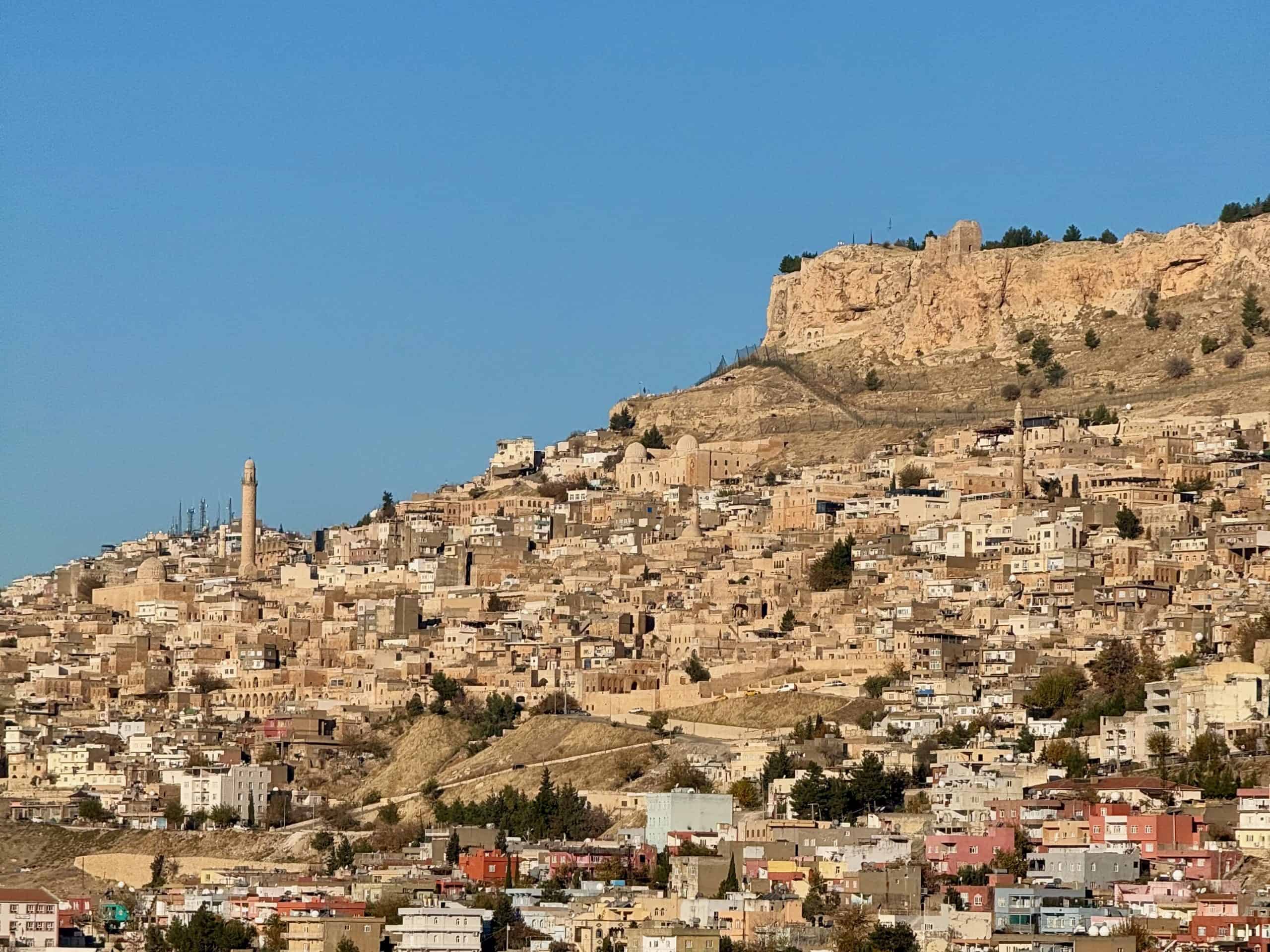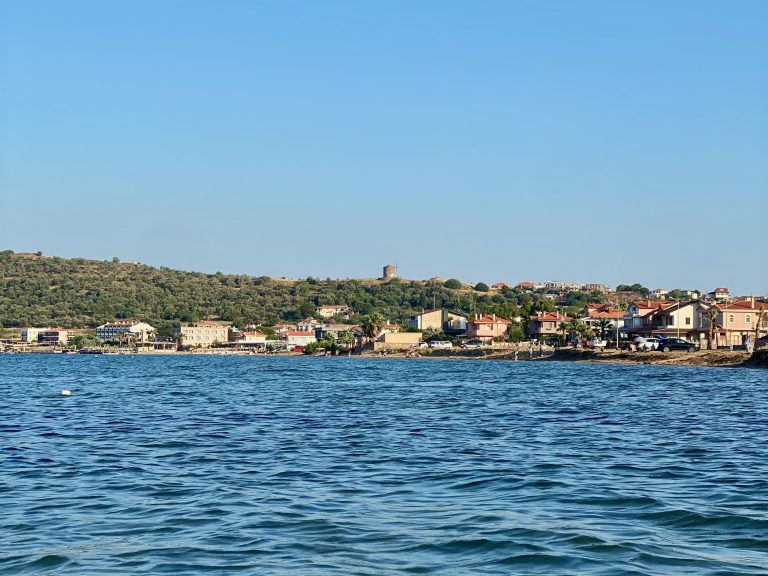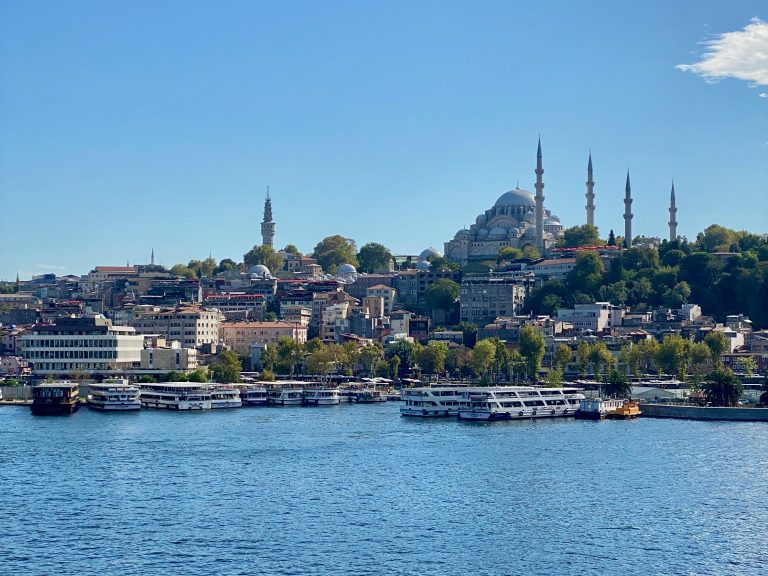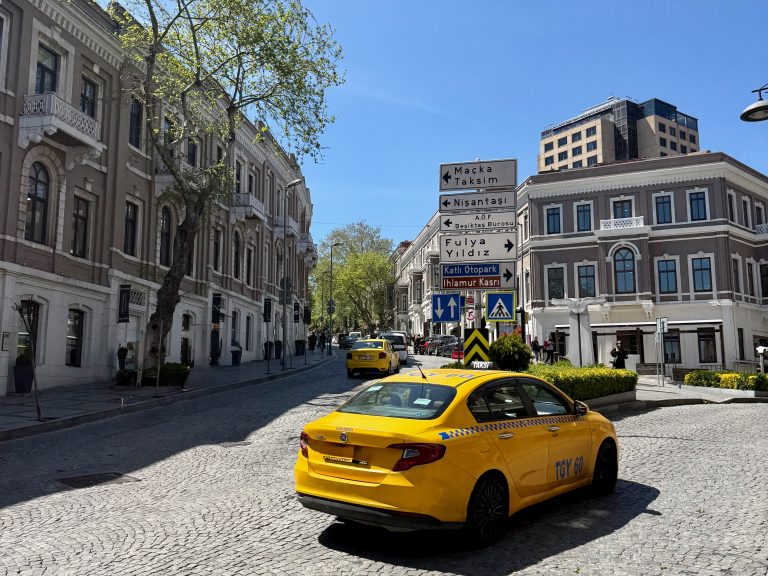Mardin Castle & Medieval Old Town Visitor Guide 2025

Sitting between the Euphrates and the Tigris, two of the most notorious rivers in history, is a place called Mardin.
Once a part of northern Mesopotamia and the Fertile Crescent, it is now a province in southeastern Turkey. The capital carries the same name and welcomes visitors with a view of ancient limestone houses and a citadel, asserting the resilience of a place that has seen it all.
A journey to Mardin gives the sense of stepping back in time or into an enchanting painting. This guide will cover the legend of the Mardin Castle and offer insights into visiting Old Town Mardin for a picturesque experience.
Mardin Castle
There are many legends surrounding the Mardin Castle, as is to be expected in a land that has been home to a variety of civilizations starting in the 11th century and minority groups throughout time.
Mardin sits on a hilltop overlooking the Mesopotamian plains, which means that it has remained a coveted strategic territory throughout history. It was a part of the Akkadian Empire, considered the first in history, and it was also a part of the last empire in the area, the Ottoman Empire.
But before and between empires, it has been inhabited by many civilizations, all with different beliefs and cultures, giving Mardin a rich cultural and folkloric diversity.
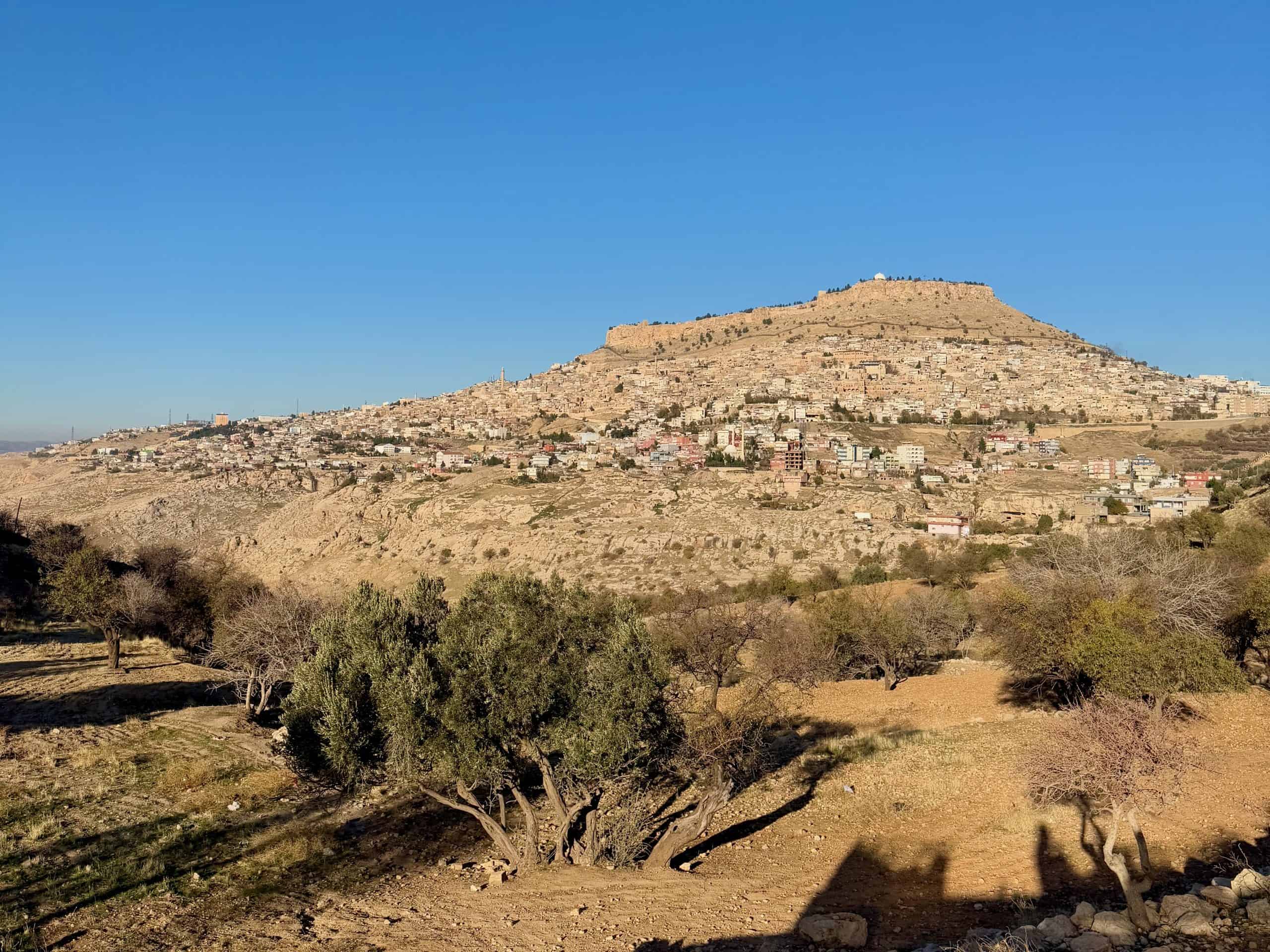
While the official language is Turkish, there are at least three more languages prominent in Mardin’s daily life. Once a part of Kurdistan, a large Kurdish population remains, and the language is spoken amongst families and neighbors. The proximity to Syria means that Arabic is spoken since many families still have ties. Mardin is also home to the largest population of Syriac Christians in Turkey who speak Aramaic, sometimes also known as the language of Jesus.
Mardin is home to other minority religious groups such as the regional gypsies known as The Dom, the Yazidis with their Peacock Angel, and the sun worshiping Shemsis.
According to the University of Mardin, the legend of the Mardin Castle concerns a fire and sun worshipping Persian king named Şad Buhari. He happened to be very ill but miraculously made a full recovery while staying on Mardin’s hilltop. In gratitude to the place that had healed him, he built a pavilion where the Mardin Castle now stands.
He remained in Mardin for 12 years until a plague took over, killing or expelling the residents. Mardin and Madin Castle would remain abandoned for a century until the Byzantines.
After the Byzantines came the Muslim dynasties of the Umayyads, Abbasids, and Hamdanids, followed by the Kursish dynasty of Marwanids and eventually the Turkic dynasties of Seljuks, Artuqids, and the Ottomans.
Each added to the identity of Mardin, but the influence that is most evident is arguably that of the Artuqids, who provided the framework for the alluring vernacular architecture now adorning Mardin.
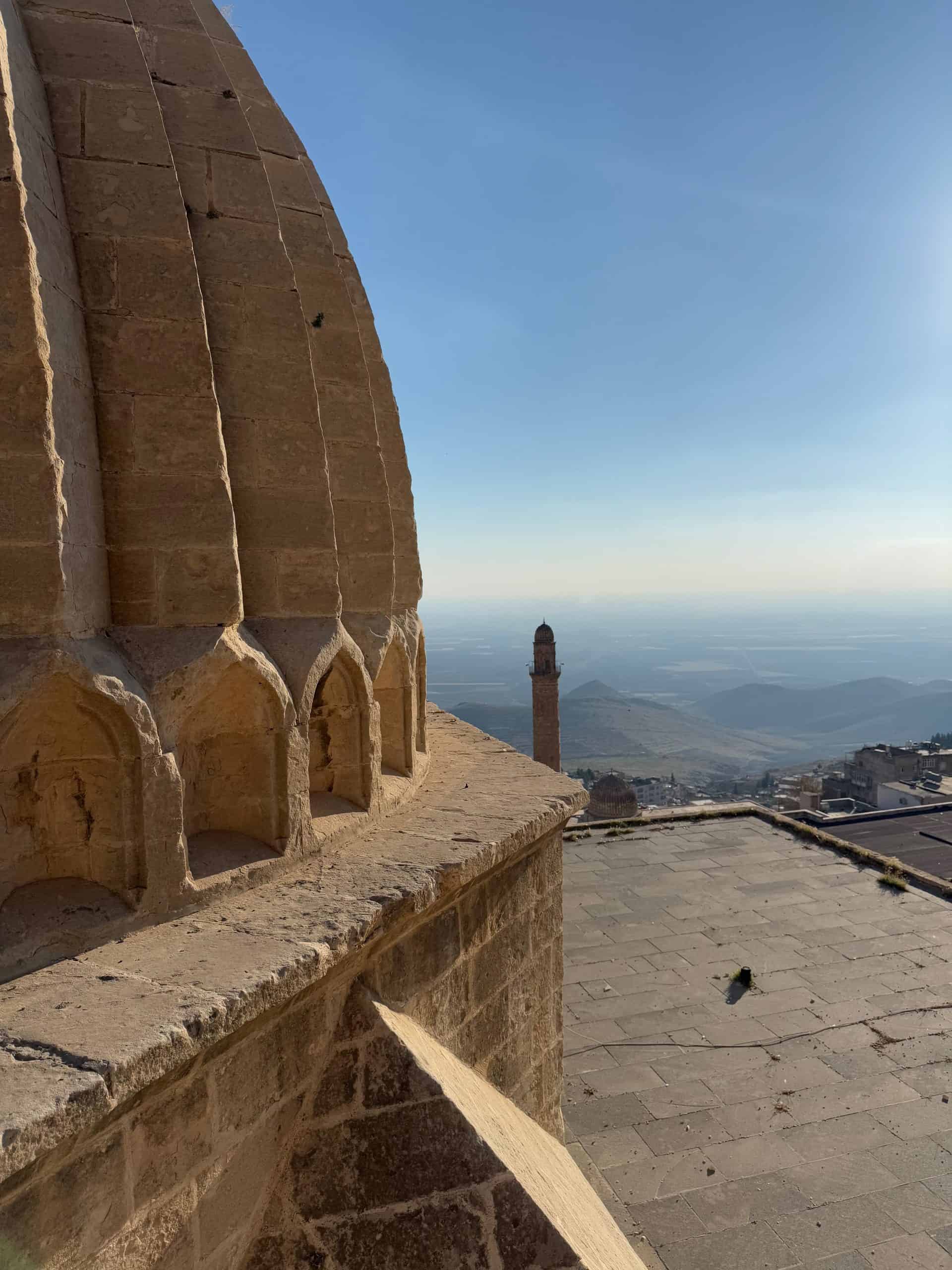
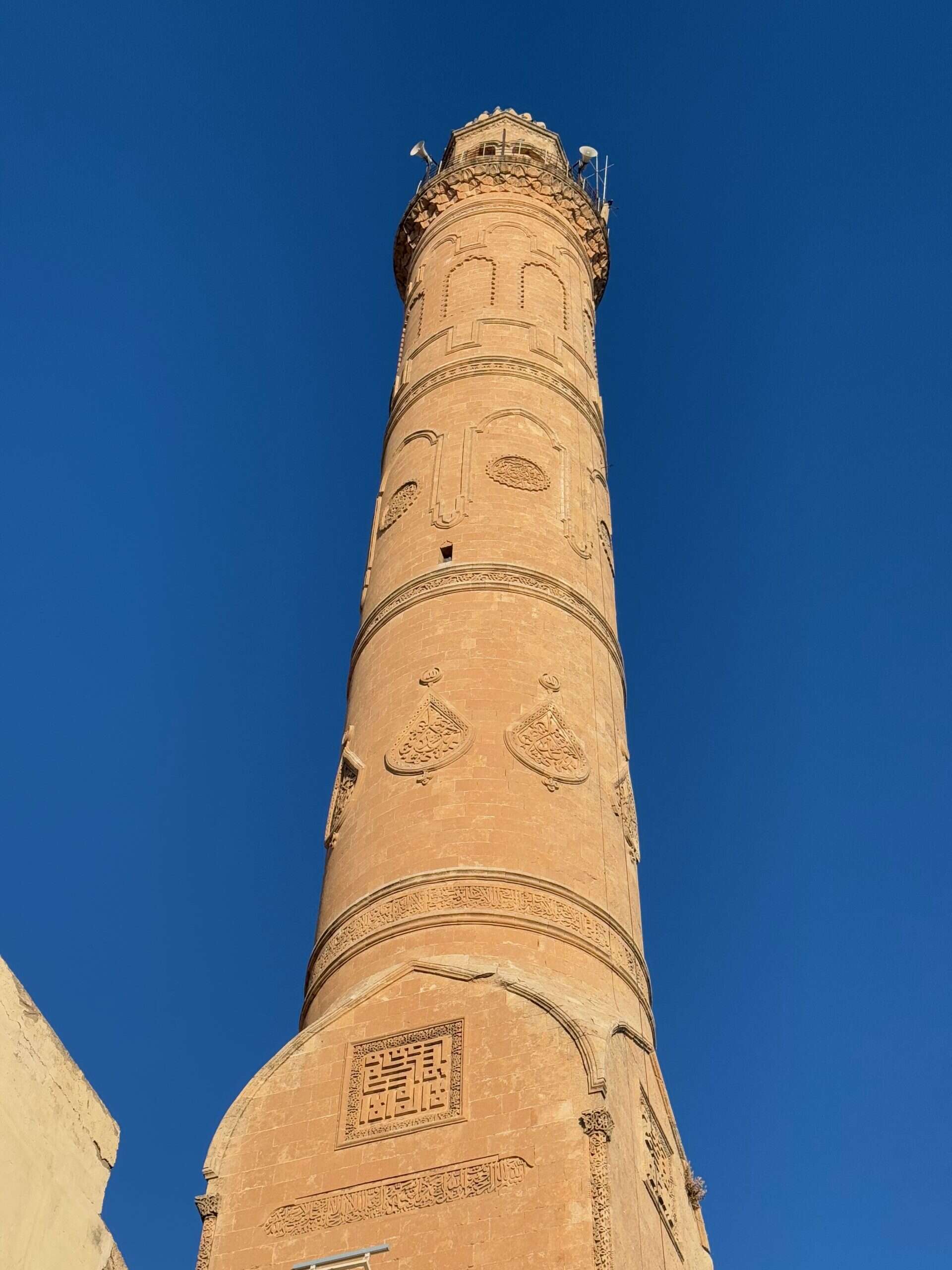
How To Visit Mardin Castle
Presently, it is not possible to visit Mardin Castle since it is still serving as a Nato radar base due to its strategic position. That being said, there are a few places that offer a glimpse of Mardin Castle and mesmerizing views of the Mesopotamian plains.
Zinciriye Madrasa
Zinciriye Madrasa is located at the highest point in Mardin, just below Mardin Castle, and is open for tourist visits.
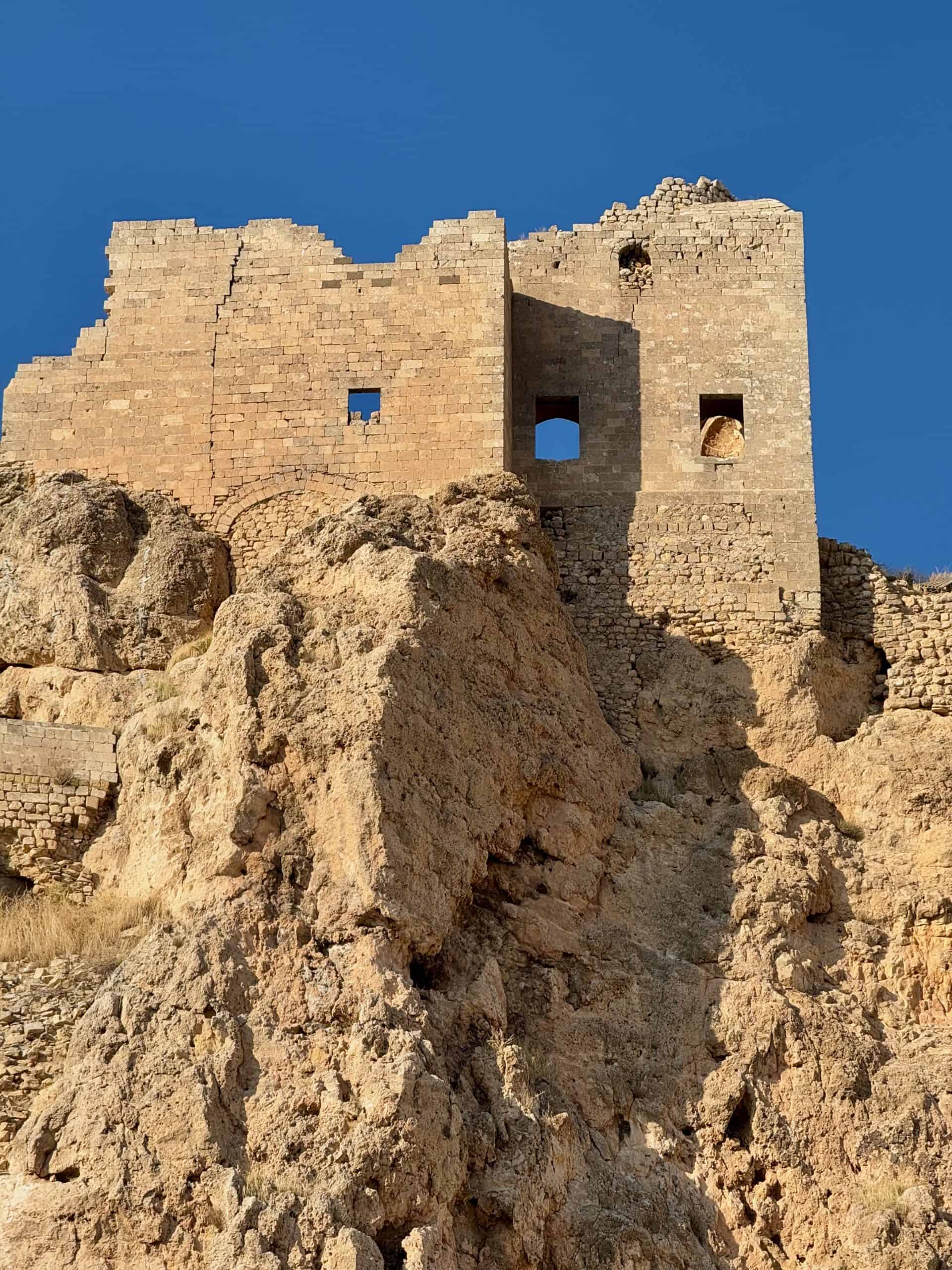
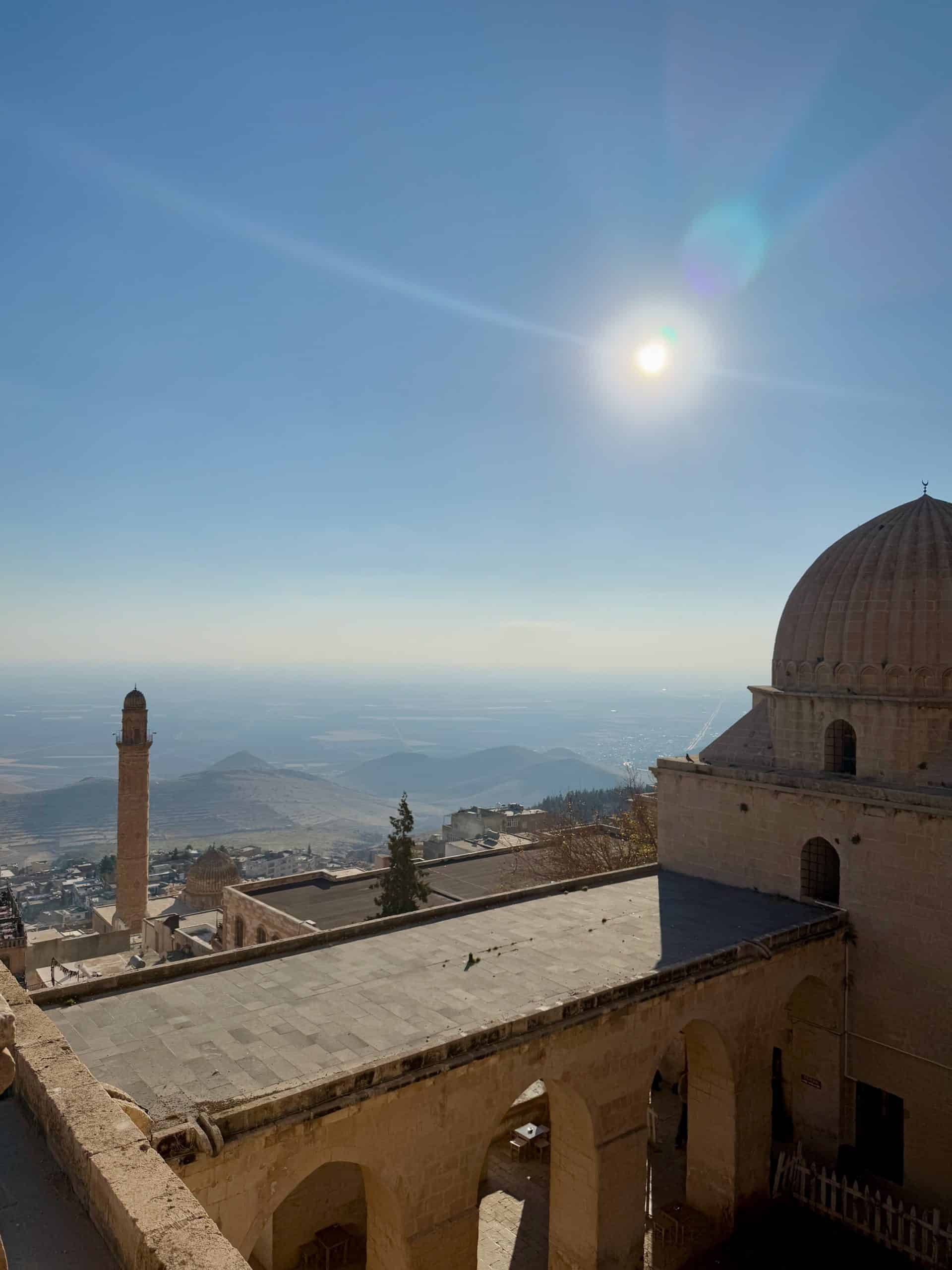
The Madrasa was commissioned by one of the last Artuquid rulers, Sultan Isa. Originally intended as a complex complete with a mosque, madrasa, and mausoleum for the founder, it was built in the Artuquid style, centering activities around two courtyards as opposed to one.
The limestone walls, the greenery in the courtyards, and its calming fountain are enough to draw you in, but the views from the terrace are some of the best in Mardin.
Below stands the emblematic minaret from the Ulu Camii, Mardin’s Grand Mosque, and above what remains of the timeless fortress of Mardin Castle.
Adorned by two distinctive domes, its top terrace invites visitors to gaze at the beauty of the rippling limestone homes leading to the vast expanse of the Mesopotamian plains.
Gerdanlık Seyir Terası
Gerdanlık Seyir Terası is located outside of Old Town Mardin and is meant to contemplate the Old Town from afar.
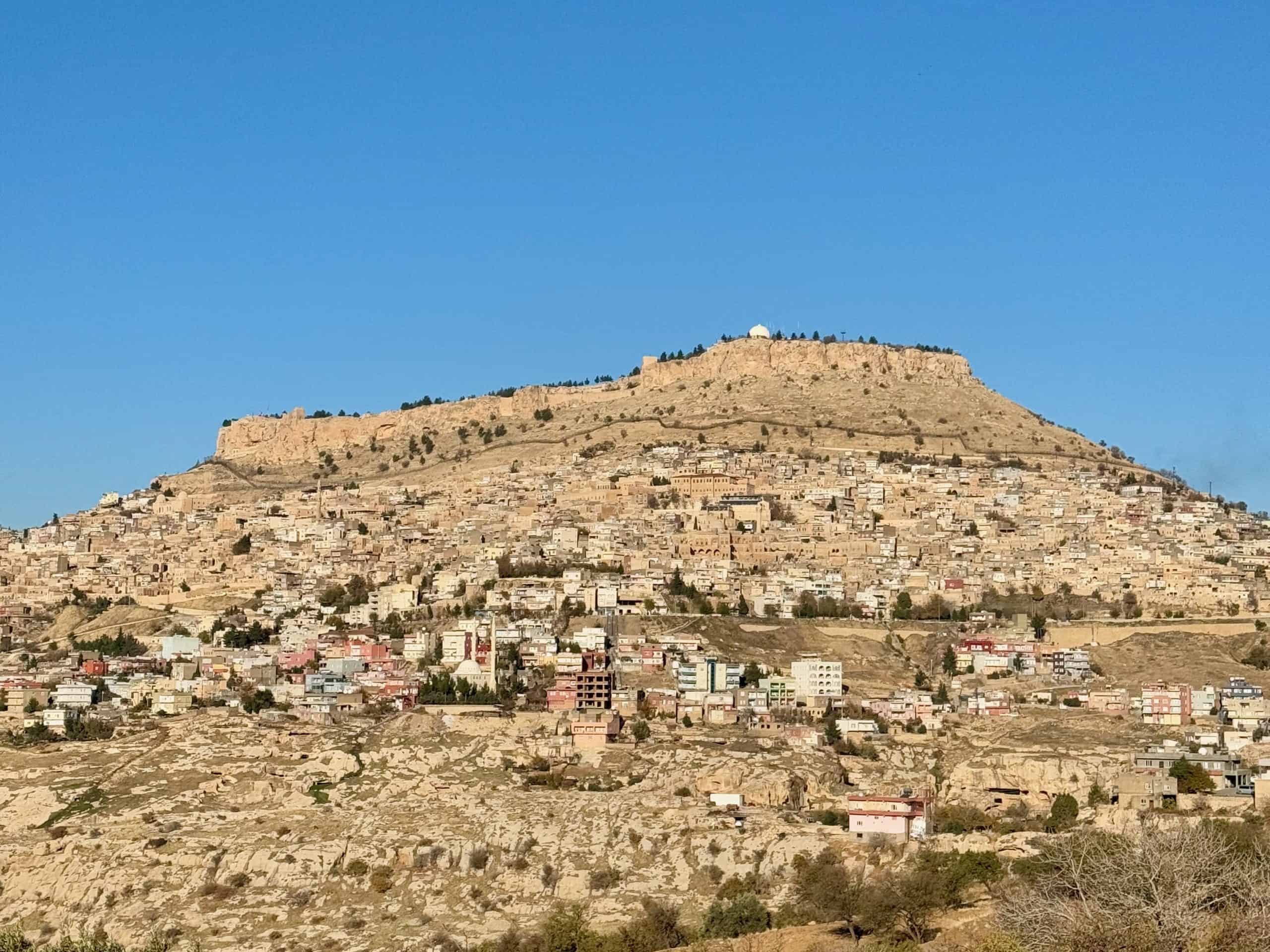
It is a small dedicated panoramic viewpoint off of Nusaybin Street that offers an inverted view of what can be seen from the Madrasa, starting with the Mesopotamian plains, followed by several layers of limestone houses and mansions until reaching the top with Mardin Castle.
Explore More In Old Town
There is a peculiar charm to getting lost in the Old Town. It is as if its cobbled streets and narrow alleys were made for wandering. Mardin is often referred to as an open-air museum, so even without a clear plan, you are bound to end up in front of a beautiful view or interesting discovery.
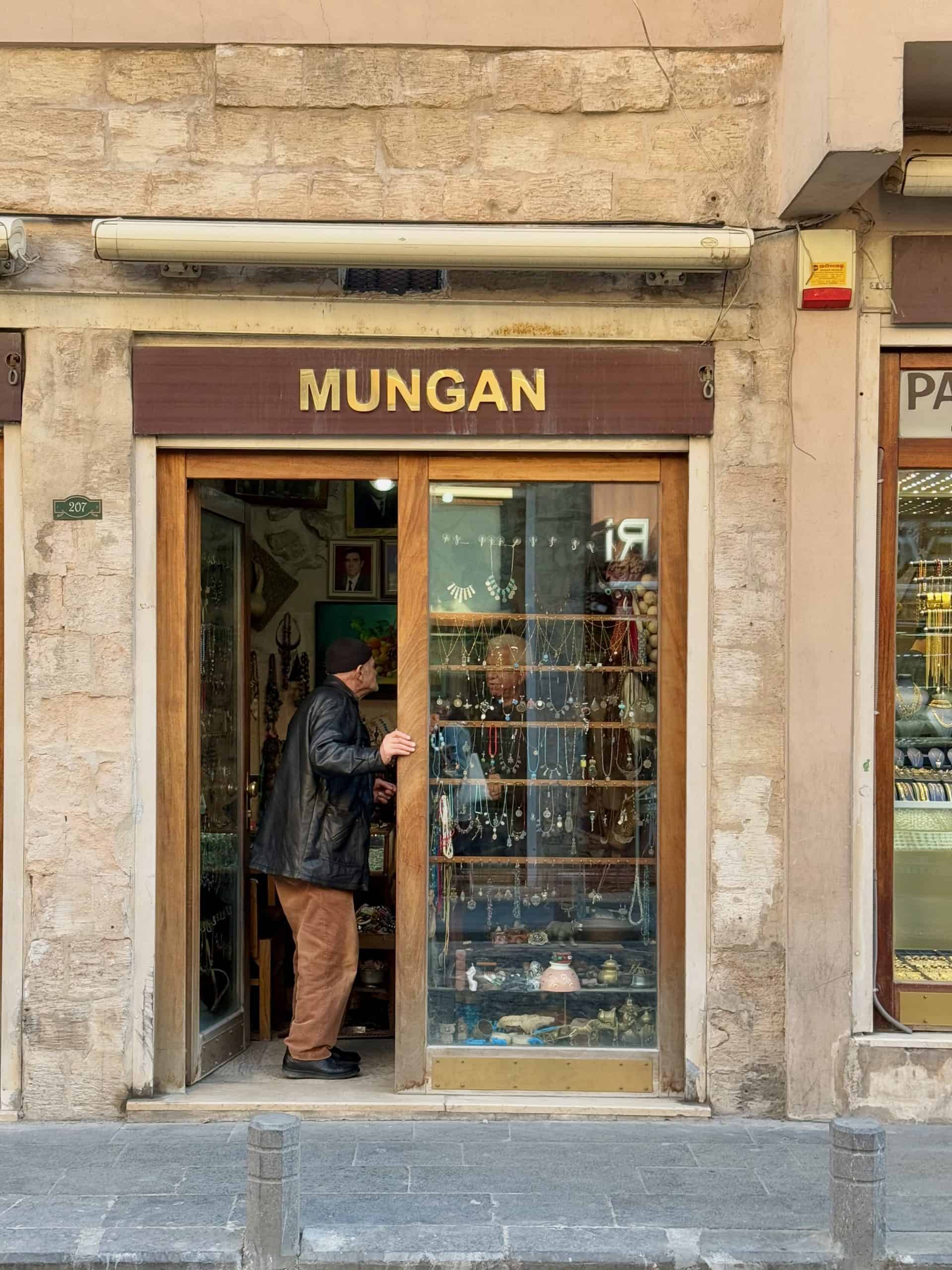
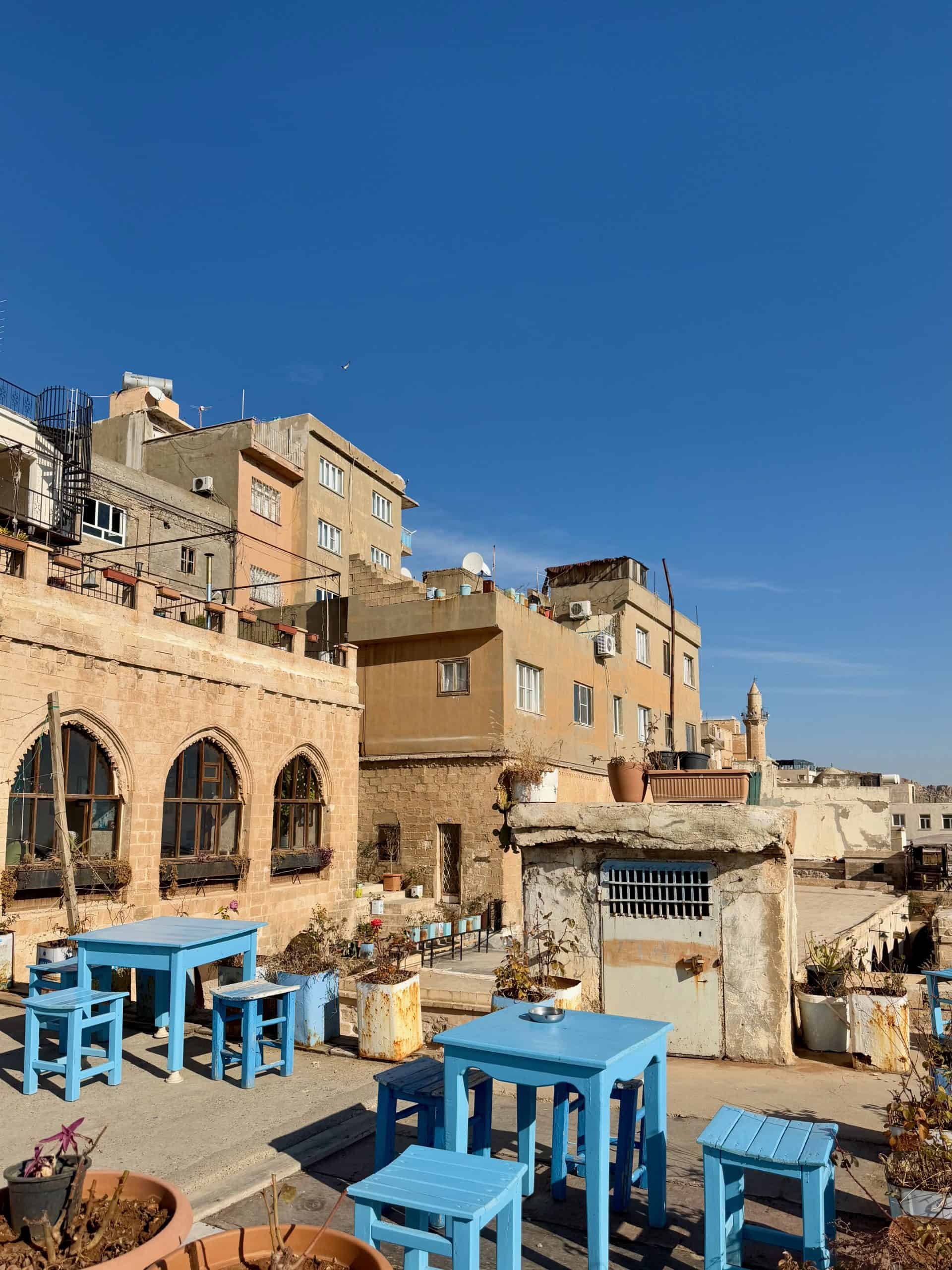
1. Cadde or First Street runs through the center of the Old Town, lined with a variety of shops selling all types of goods, reminding the visitor that Mardin was once an important point on the Silk Road. A place of exchange and discovery.
South of 1. Cadde
The Tellallar Çarşısı or Revaklı Çarşı (Town Clerks Bazaar or Portico Bazaar) is an open-air bazaar spanning multiple streets. Its paths are shaded by the porticos lining the shops, which are found slightly inside the arched porticoes and expose beautiful vaulted doors when closed.
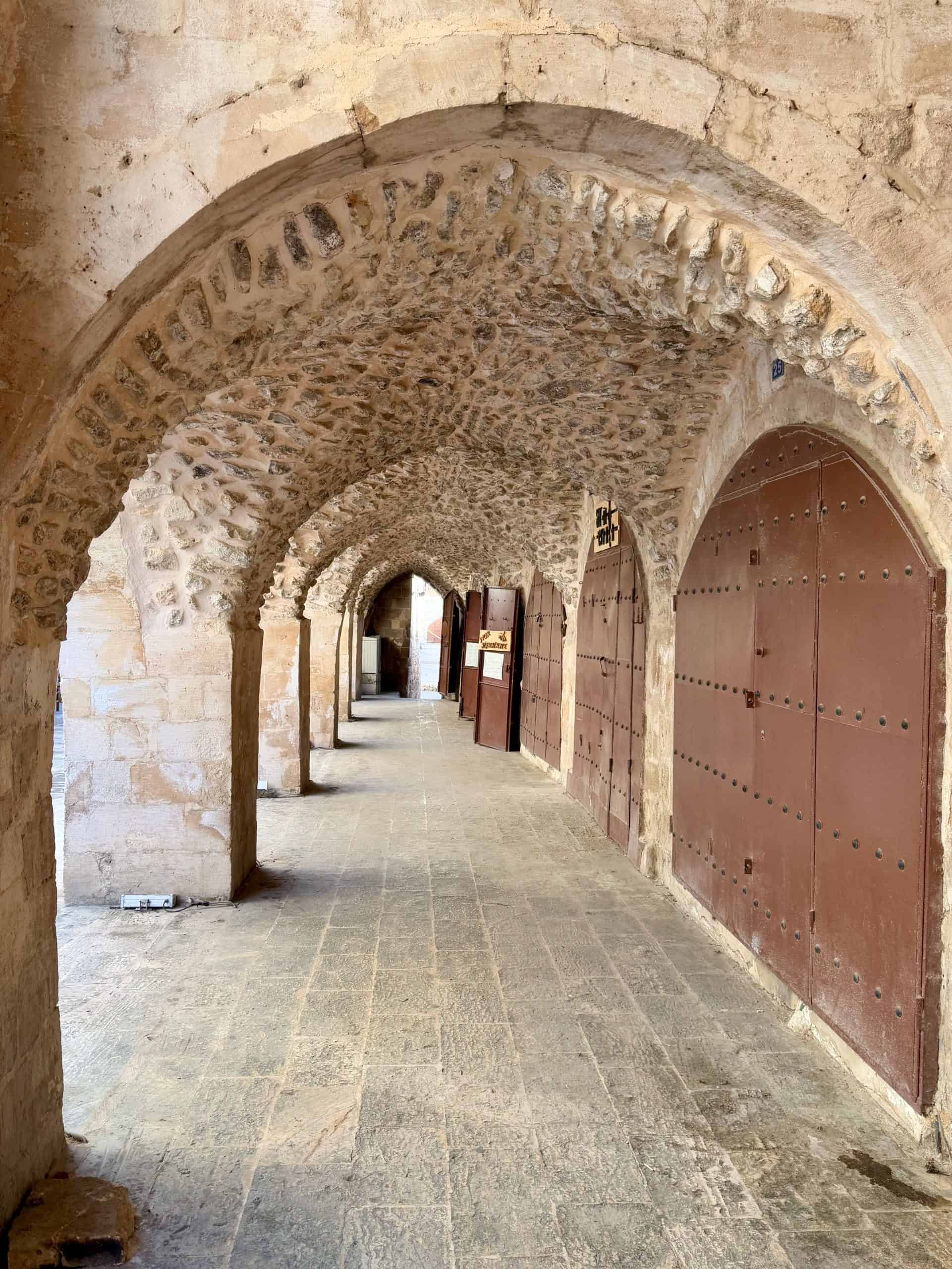
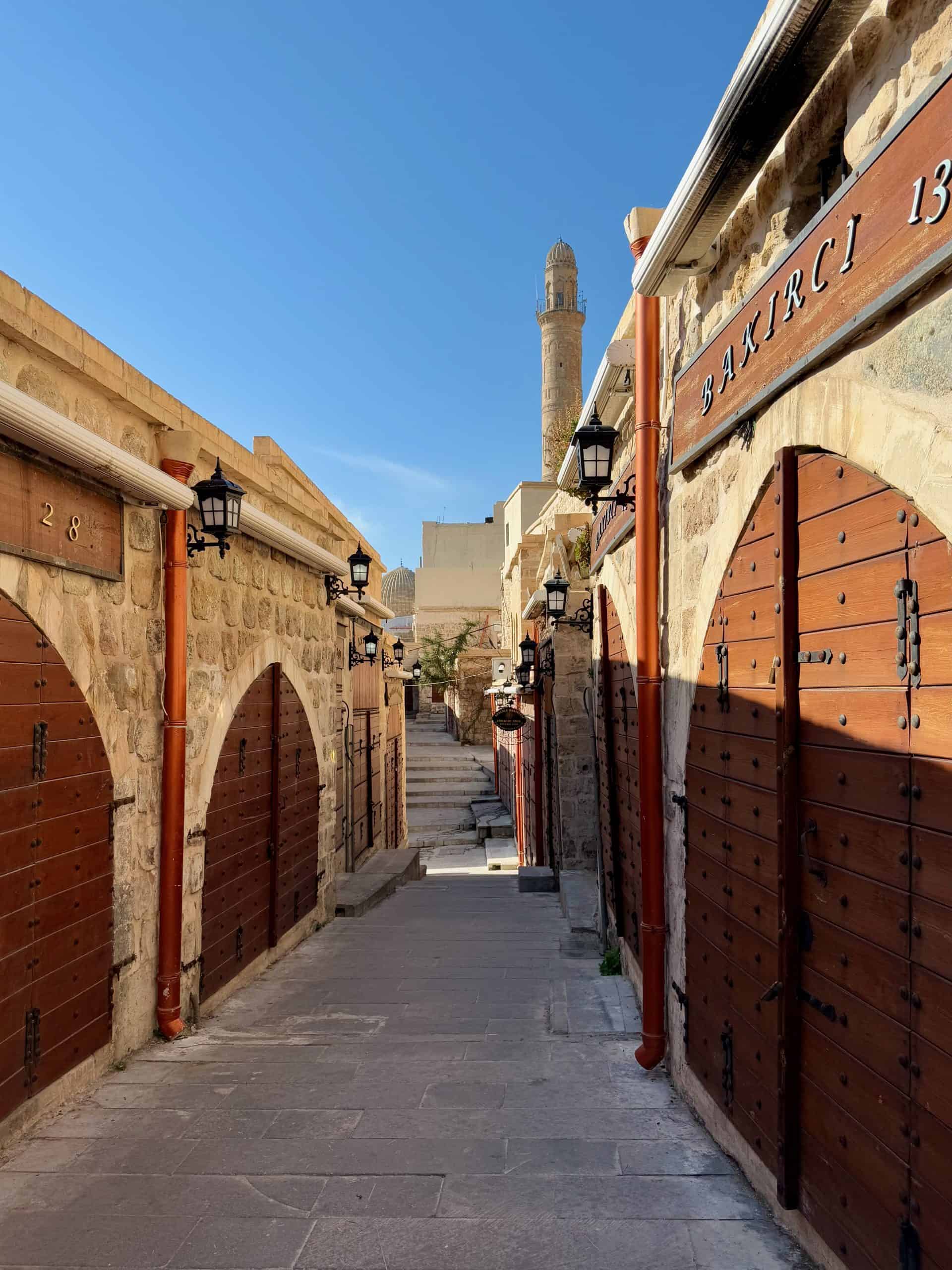
In the bazaar, all sorts of goods are sold, and many times you can even find artisans at work as you stroll.
As you thread through the bazaar, you might find yourself coming upon Ulu Camii, Mardin’s Grand Mosque. Another great example of Artuquid architecture, its minaret will be a prominent view during your visit.
Visits to the mosque are possible, and the minaret can be appreciated from the courtyard or surrounding rooftop restaurants and cafes in the area.
North of 1. Cadde
Only a few steps off the main square on 1. Cadde is Mardin’s archeological museum.
The museum holds artifacts from multiple civilizations from the time of the Assyrians to the Ottomans. It also provides a great opportunity to experience the architectural setup of a traditional house in Mardin.
The Forty Martyrs Church, or Kırklar Kilises, is also only a few minutes off the main street and worth a visit to contemplate its architecture and surviving artifacts. It is a Syriac Christian church built in the 6th century that went on to serve as the patriarchate of the Syriac Orthodox Church between 1293 and 1925.
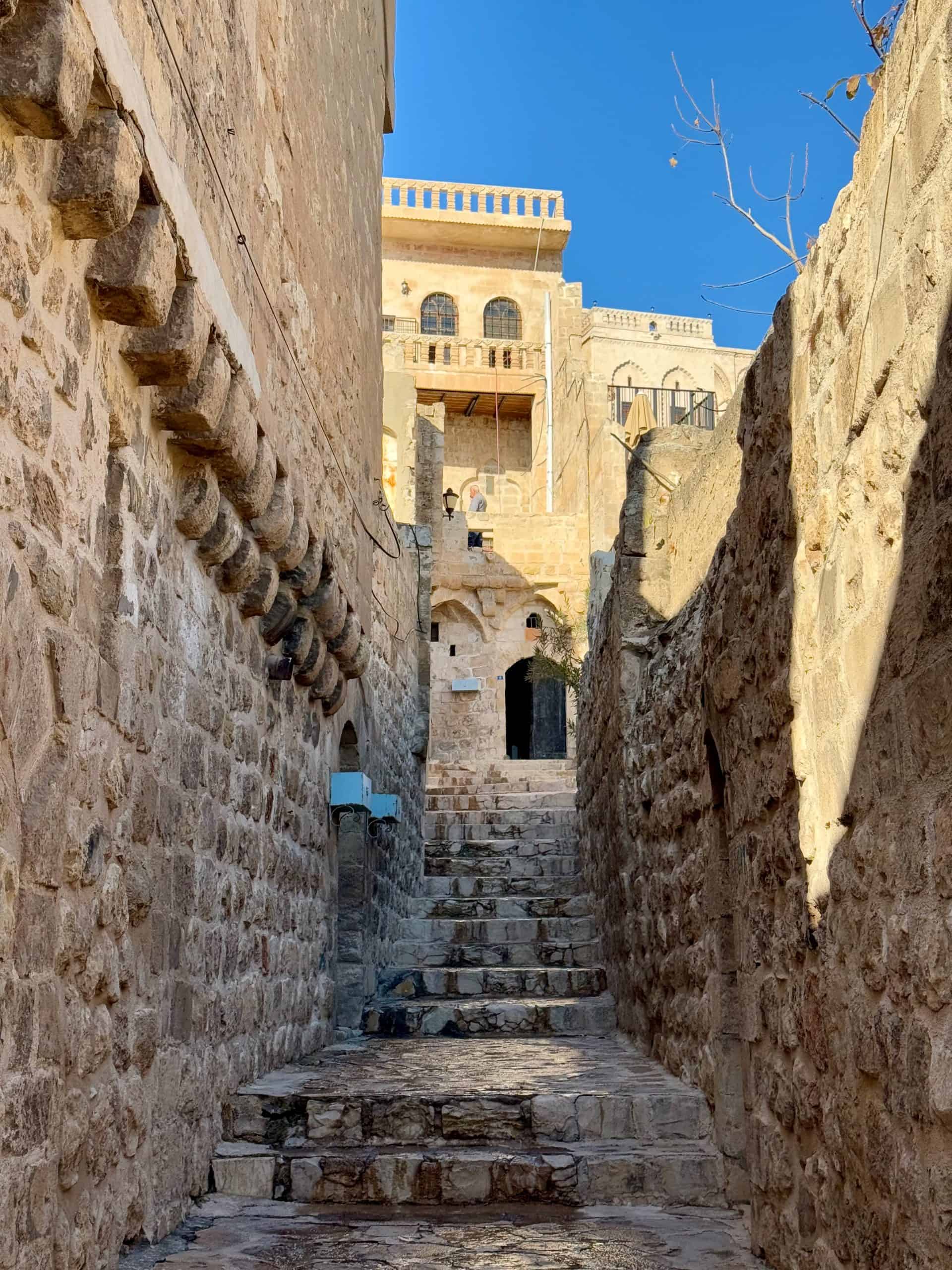
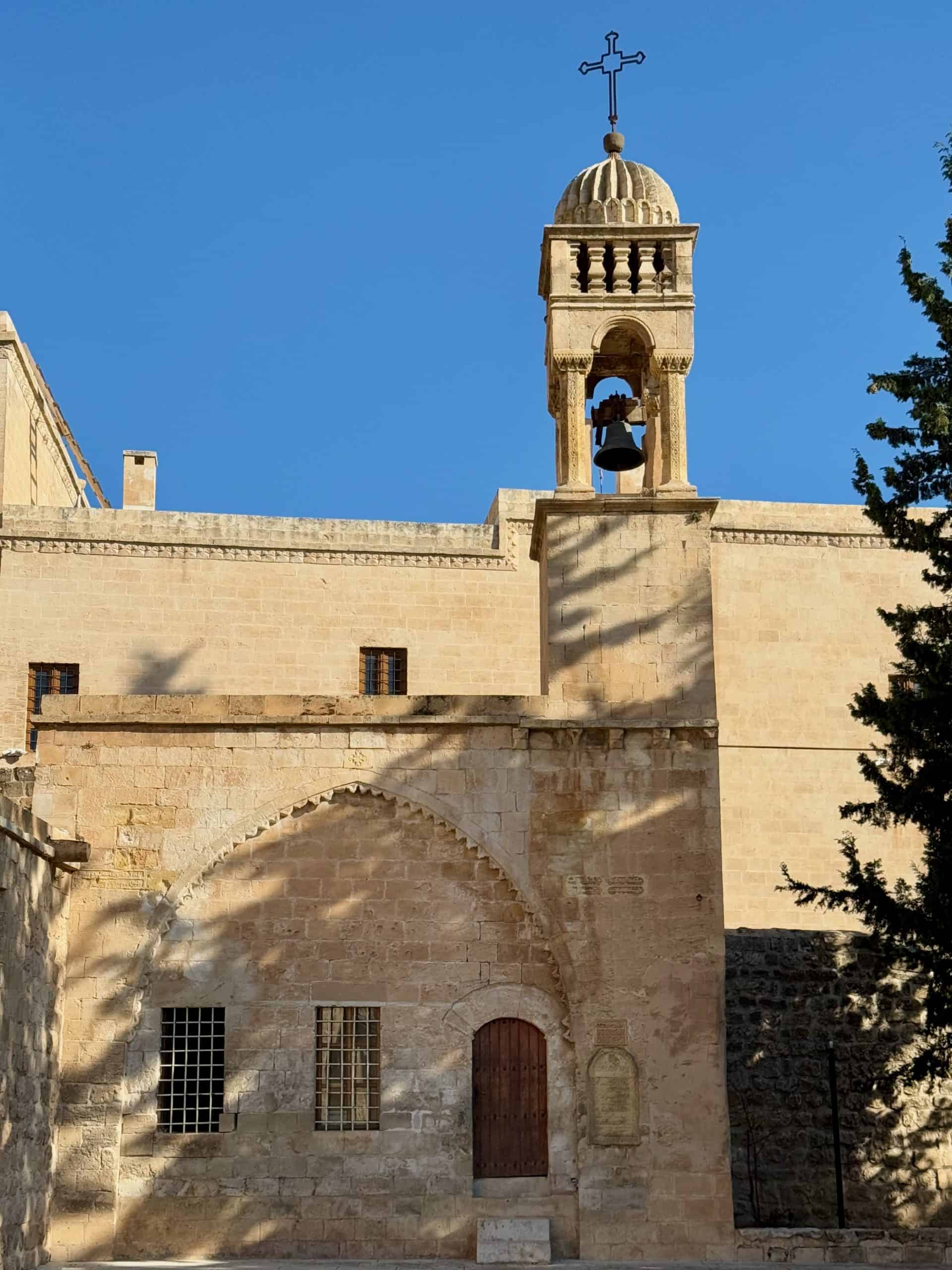
The name comes from the 40 martyrs whose remains rest there.
The legend tells the story of Behnam and Sarah, the children of an Assyrian king who converted to Christianity after Behnam witnessed Mathew the Hermit cure Sarah of leprosy on Mount Alaf.
But when the king found out, he gave his children and Behnam’s 40 slaves an ultimatum to renounce Christianity or die on the freezing lake of Mount Alaf. Only one of the slaves renounced the faith but died instantly after doing so, and one of the king’s men took his place, completing the 40 martyrs that would die on Mount Alaf and now rest in Mardin.
After visiting the church, you could continue to stroll up the winding streets of Mardin filled with shops, bakeries, and little restaurants all the way to the top, where the Zinciriye Madrasa awaits with wonderful views.
Where To Stay Nearby
Accommodation in Mardin’s Old Town is another magical experience. Most of the hotels in the Old Town are housed in traditional Mardin homes that have been converted to host visitors amongst limestone walls, lush courtyards, and impressive Mesopotamian views.
The options provided below are all located in the Old Town for a practical yet mystical experience while visiting Mardin.
- Arura Mardin : an elevated and newly renovated boutique hotel in the center of the Old Town. Arura Mardin houses guests in a traditional Mardin-style building that has won multiple awards for its architecture and interior design.
- Ulubey Konağı : invites guests to an 800-year-old traditional Mardin-style mansion experience complete with mesmerizing views of the Mesopotamian plains from its terraces.
- Beyzade Konaği Hotel : a more modest but equally alluring option offering guests a stay at a traditional Mardin-style mansion.
Additional FAQ’s
Below are answers to a few frequently asked questions about travel to Mardin.
What is special about Mardin?
Few places like Mardin remain where travelers are well surrounded by the preserved remains of a past time. One of the most alluring aspects of Mardin is its traditional stone architecture, as well as the medieval setup of the Old Town, perfect for slow wandering.
Is Mardin worth visiting?
Absolutely, there is much to be discovered in Mardin and its surroundings. The enchanting views of monasteries, madrasas, and winding alleys will likely remain with you long after your visit.
The Mesopotamian plains are enchanting, and the chance to see the ‘cradle of civilization’ is one of many reasons to visit.
Is it safe to travel to Mardin, Turkey?
Yes, it is generally safe to visit Mardin. Despite the proximity to the Syrian Border, it remains a peaceful and safe destination for tourists. Mardin is actually amongst the cities with the highest domestic tourism in Turkey.
People also talk of the tolerance that exists in Mardin due to its rich diversity in cultures and religious beliefs, so it is also overall considered a highly welcoming city.
Final Thoughts
Mardin, resting between the legendary rivers of the Euphrates and Tigris, is a land where history, legends, and architecture intertwine to form an unforgettable experience. An open-air museum and a medieval town, it is the perfect place to stroll and get sidetracked, allowing the town to reveal what it wants.
The Mardin Castle sits on the hilltop, a witness to it all, the rise and fall of civilizations and the assortment of languages, beliefs, and cultures that have remained.
It is a place filled with terraces because part of the visit is to gaze at the Mesopotamian plains with a warm cup of Turkish tea or a glass of local Mardin wine.

